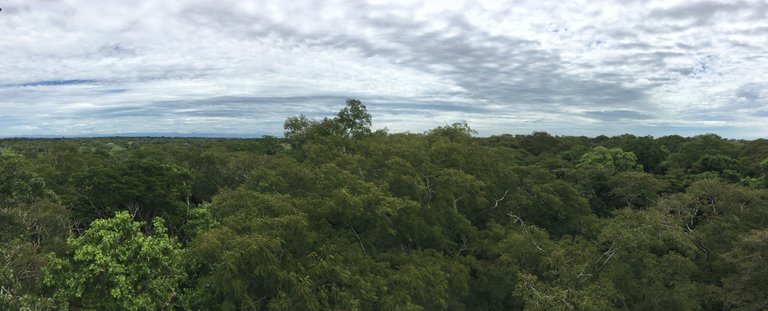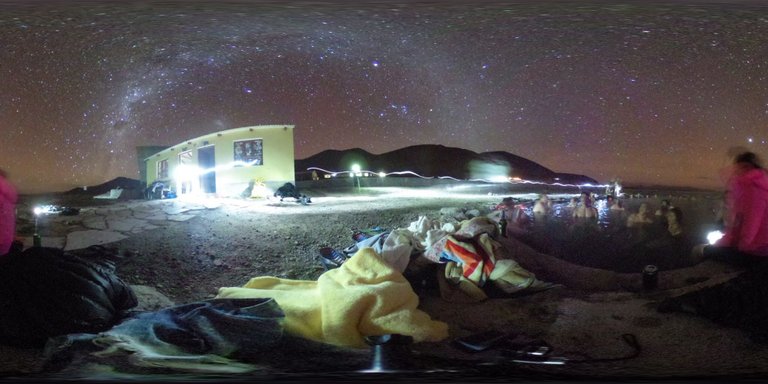Dear Friends,
I must admit that until a year or two ago I didn't think about Bolivia much, and if you'd asked me about it I would have only been able to tell you that it's a country in South America. A few months ago I had the pleasure of visiting this country on a short trip to South America, and I couldn't recommend it more.
As one of the cheapest countries in South America, and possibly one of the most affected by the Spanish colonisation, I have to admit I didn't expect a huge amount. I flew to Bolivia because it was one of the cheapest destinations from Europe to fly into and because of the Salar de Uyuni, otherwise known as the Bolivian salt flats.
Upon arrival, it was completely hectic. I arrived on a Sunday morning, expecting calm, as I expected a religious country to be shut down on a Sunday morning. How wrong I was! And this was my first lesson that pretty much everything I thought about South America was wrong.
Here I am attempting to get from the airport to my accommodation, totally shocked by how many people can fit on these buses!
I arrived into Santa Cruz de la Sierra which upon reflection, is not the most beautiful of cities. I was completely enchanted however as it was my first experience of South America. With a hot jungle climate and full of mosquitoes, it is a completely different experience to a lot of the rest of Bolivia which is steeped deeply in Andean culture. Although the central square of Santa Cruz is beautiful and safe, the rest of the city will make you feel a little uneasy. I would highly recommend the botanic gardens however, as for only 10 bolivianos ($1.45) you get access to the entire park and a beautiful "mirador" to climb up on and view the canopy layer
From Santa Cruz I followed what is known as the "gringo trail" to Sucre. In order to keep this post short and readable, I won't go into too much detail except Sucre is a beautiful town in the Andes (not too high, so altitude sickness shouldn't be a problem) with some great treks available from a vegetarian organisation known as "Condor Cafe" and a lot of historical sites that can be visited.
I would advise anyone in Bolivia to stop briefly in a town called Potosi. At 4,000 m high altitude sickness can be a real problem here, but thankfully I wasn't affected. As this is not much more than a mining down deep in the mountains, there is not much to do, nor is it particularly beautiful. However, one experience you won't get anywhere in Europe or the US is the mining tour that is offered there. The Potosi silver mine was so important to the Spanish Empire that the silver extracted not only paid for a huge part of the empire's debt to England, but even to this day in Spanish to say that something "vale un Potosi" means that it is "worth a huge amount". There are various mining tours available but the best ones are run by ex-miners. While some people are ethically against the tours and see them as "poverty tourism", we spoke to a lot of locals, including miners, who told us that they in fact like the tours as there is not much silver left and this brings money to the city. Of course, there are miners that don't like tourists walking in, so I advise people to research this before they go in. I decided to do it, and it was an unforgettable experience. However, anyone with even a bit of claustrophobia should think twice about going in!
Personally I had respiratory problems in the past, but had been promised we'd have a mask to breathe through. My second lesson. Never trust anyone! The "mask" we were given was a bandana, which as you can imagine, does not help in respiration. After going up and buying gifts for the miners (soft drinks, alcohol, cocoa leaves and dynamite are the best to buy) and then climbing through some very narrow holes on our stomachs and our hands and knees, it took a lot of nerve to not have a panic attack due to the poor air quality. Although I'd highly recommend this tour to anyone, it can be dangerous.
Me with some dynamite
Some of the caustrophobic passages
From Potosi I travelled to the Salar de Uyuni which is a must see for anyone going to Bolivia. The trick in Bolivia, and this is true for most of South America, is to only book tours when you are there. The cheapest (and often best) options are found on the ground and trying to organise it online is almost a waste of time. After walking around a few agencies to compare prices etc we chose a company that provided a 3 day tour (highly recommendable!!) and it was worth every penney. Although the salt flats themselves are only the first day, the rest of the tour is incredible. I would urge anyone going on a 3 day tour to ensure that the second night is spend at the hostel next to the thermal springs. Although all tours visit the springs, only some tours spend the night there. During the day it's incredible, but at night it's spectacular. Spending an evening drinking wine in a hot thermal vent while star gazing a perfectly clear and light pollution-free sky was a highlight of my entire South American trip.
Can't go to the salt flats without some classic perspective photos
Views from another world once you go beyond the salt flats
Make sure your tour spends the night at the thermal vents on the second night
For fear of giving too much of majestic views away, I won't put up any more photos, but can only recommend that if you have the opportunity to go to this incredible place, you'll see a landscape from another world.
From there, the options are to go to San Juan de Atacama in Chile, or as I did, go north towards Cochabamba and La Paz. These are both two big cities, although I preferred Cochabamba with a lot going on! Not a huge amount to specifically see in either of these, although Cochabamba has a Jesucristo statue bigger than the one in Rio (and a nice workout if you take the steps up) and La Paz is so enormous you could easily spend 3 weeks there. However, from La Paz it is possible to get one of the cheapest (without lacking in quality) jungle experiences in South America.
As a biologist I couldn't refuse the opportunity of spending two nights in the Amazon rain forest. I organised the tour in La Paz and took the arduous 16-18 hour bus journey to Rurrenabaque (which is almost as hard to get to as to pronounce) along some of the most terrifying roads I've ever been on. It would be a lie to say i didn't genuinely believe we might fall off a cliff at least once. The jungle however, was of course worth it. There are two tours to choose from, the so called "Pampas" tour or the "Jungla" tour. In the Pampas you spend your day on boats, in large bodies of water, searching for anacondas, alligators, pink dolphins, monkeys and other animals and are guaranteed to see a lot of them. I however chose the "Jungla" tour, in which you go and stay in the actual jungle, but because of the large numbers of trees, it's very hard to see any animals. All I saw were insects and huge spiders (not limited to, but including, tarantulas!). However, I'm fascinated by the social insects and had only just watched a documentary on leaf-cutter ants, so seeing them in the wild was amazing.
From Rurrenabaque it was a 1.5 hour boat ride along a river to the lodges. I would highly recommend the Jungla tour to anyone interested in insects, habitats, hikes and anyone that want's to feel the humidity, atmosphere, and what its like to be within what are known as the Earth's lungs.
Lastly, before leaving Bolivia I had to cross Lake Titicaca. While there, I was advised to spend a night in Isla del Sol, which although I hadn't planned on, I'm very glad I went. Isla del Sol is the island in Lake Titicaca the Incas believed the sun was born on. To this day, there is no proper infrastructure and no motorised vehicles. Anyone with walking difficulties is not recommended to go, but as it's only an hour boat ride from Copacabana (not the Brazilian Copacabana), it is highly recommended. I was extremely lucky with the weather and hiking through the wilderness of the island was just incredible.
Arriving at Isla del Sol
The main mode of transport!
A private room with a double bed and a view like this cost only $8 a night
All in all I cannot recommend Bolivia enough as a destination. I have only spoken of the natural beauty of the island, but any review of Bolivia would be incomplete without talking about the people. Of course Spanish will go a long way in Bolivia. I was lucky to have learnt Spanish in the past and was able to communicate well with locals. The Andean way of life is very much alive in most of Bolivia. Although the people are generally very traditional and usually do not like photos (I'm not sure why this is), they are always more than happy to help and more than friendly to speak to. The fear of allowing children to play outside doesn't seem to exist as strongly over there, and young kids seem to love travelers who often give them sweets or other treats.
I hope you enjoyed reading my post and hopefully it wasn't too long! I could go on for double the length talking just about the people themselves, but hopefully if anyone goes they will interact with the locals themselves. One last piece of advise I would give to anyone travelling to Bolivia from Europe or the US (and I believe this is true for lots of South America), expect chaos, haggling and any time of departure to be nothing more than an approximation. But all this adds to the charm and allows you all the more to get lost int he culture!















Wow Bolivia looks amazing!! Your pictures are so good!!
Upvoted :)
Thanks for reading Lauren, I genuinely cannot recommend going there enough!
Can't wait to see the salt flats myself :) @dedalux13
I'm jealous that you'll get to go without knowing what to expect! It's breathtaking!
Can't wait!
Great pictures and adventure.
Thanks for reading, it was an unforgettable experience :)